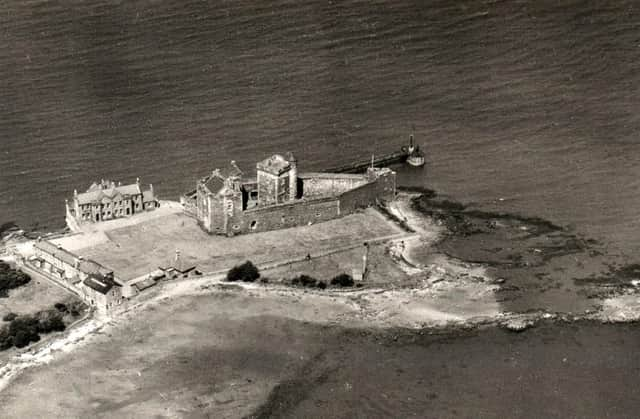Looking Back with Ian Scott: Blackness Castle - the ship that never sailed


I’ve been there many times and I never fail to be impressed by its dramatic appearance which has caught the eye of film producers over the years. Ivanhoe, The Bruce, Macbeth and more recently Outlander have been filmed within its grim walls which for centuries held state prisoners and defied the attentions of powerful armies.
The importance of this spot on the river owes everything to its natural harbour, the finest on the south side of the Forth. Long before the fortress was erected the port was harbouring merchant ships and it was the need to protect this trade from attack that prompted the castle’s construction in the mid 15th century. The man responsible was the local Baron, Sir George Crichton, Earl of Caithness and Admiral of Scotland.
Advertisement
Hide AdAdvertisement
Hide AdMore importantly he was Sheriff of Linlithgow, and Blackness was the official port of the Royal Burgh which was one of the favourite resorts of the Stewart kings. Maybe it was Crichton's naval connection, or the shape of the black basalt promontory, that led to the castle's distinctive ship-shape.


Either way the result is a remarkable building with a curtain wall running all the way round like a ship's hull and towers to “stem and stern”, with a taller one as the “main mast” in the middle. The south and central towers are rectangular in plan but the north tower in the “bow of the ship” is triangular.
Sir George had recently lost his own house in Edinburgh in a feud with the Douglas family and probably thought he could settle down in his new impregnable ship-castle. However King James II had other ideas and decided that he liked it so much that he would have it for himself. In 1453, four years after it was completed, Sir George handed it over but, according to one account, his son was none too pleased at the old man’s generosity and locked up his Dad and held Blackness against the Royal army.
Despite bombardment the fortress proved its worth and in the end the King had to negotiate before taking possession by agreement. It was the first of many attempts to blow down the formidable walls and it was reinforced several times during the turbulent reign of Mary Queen of Scots.
Advertisement
Hide AdAdvertisement
Hide AdIn the 16th and 17th centuries it was used as a state prison with many political prisoners held there during the various religious wars. To quote the old music hall song, it was “one of the relics that Oliver Cromwell knocked about a bit” and was famously used to hold six Covenanting Ministers in the late 1600s. Some reports say that local women held their babies up to the cell windows so that they could be baptised by one of the “Blackness Six”!
In the 19th century it was used as an army barracks. It was later turned into Scotland’s main ammunition depot and there were many structural changes including the construction of a long cast iron pier. A century ago much of the medieval building was restored with later additions removed and it became what it has remained ever since, one of Scotland’s finest historic sites.
Comment Guidelines
National World encourages reader discussion on our stories. User feedback, insights and back-and-forth exchanges add a rich layer of context to reporting. Please review our Community Guidelines before commenting.